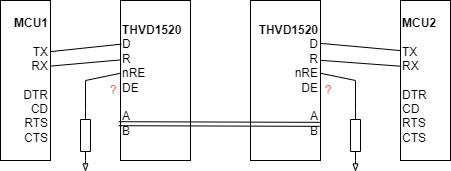Hello Team,
I'm posting on behalf of customer:
I have two microcontrollers communicating via UART and I am trying to textend over a 485 bus with the THVD1520 part. However, it doesn't seem to be working.
In the application notes (within datasheet), I've seen the application image. But I'm unsure of what to use to drive the DE pin. I have the standard handshaking pins available. Any help?
I also am unsure if DE and nRE should be driven the same way on both ends?

Regards,
Renan

